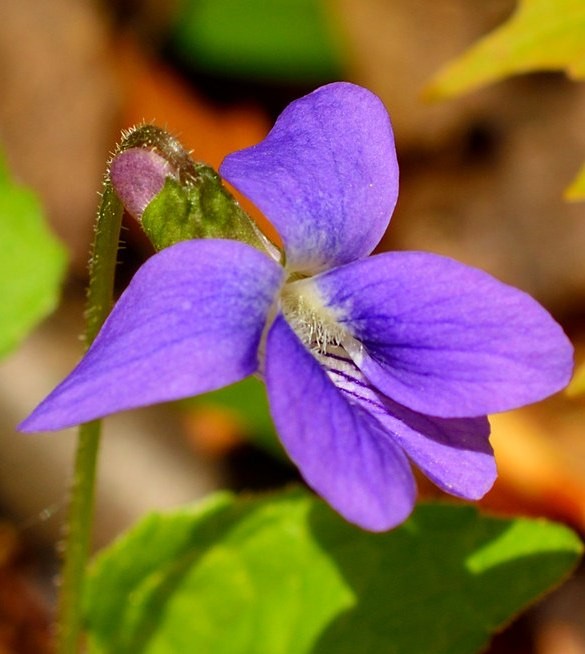Arrow-leaved violet
(Viola sagittata)

Description
Viola sagittata, commonly called the arrowleaf violet, is a species of flowering plant in the violet family (Violaceae). It is native to the eastern North America in Canada and the United States, where it is widespread. It is found in a variety of natural habitats, but is most common in dry, open communities such as prairies, glades, or woodlands, often in sandy or rocky soil. Viola sagittata is an stemless perennial. It can be distinguished from other Viola in its area by its leaves that are much longer than wide, with truncate to subcordate bases. It produces purple flowers in the spring. Viola is a genus of flowering plants in the violet family Violaceae. It is the largest genus in the family, containing between 525 and 600 species. Most species are found in the temperate Northern Hemisphere; however, some are also found in widely divergent areas such as Hawaii, Australasia, and the Andes. Some Viola species are perennial plants, some are annual plants, and a few are small shrubs. Many species, varieties and cultivars are grown in gardens for their ornamental flowers. In horticulture the term pansy is normally used for those multi-colored, large-flowered cultivars which are raised annually or biennially from seed and used extensively in bedding. The terms viola and violet are normally reserved for small-flowered annuals or perennials, including the wild species. Annual or perennial caulescent or acaulescent (with or without a visible plant stem above the ground) herbs, shrubs or very rarely treelets. In acaulescent taxa the foliage and flowers appear to rise from the ground. The remainder have short stems with foliage and flowers produced in the axils of the leaves (axillary). Viola typically have heart-shaped or reniform (kidney-shaped), scalloped leaves, though a number have linear or palmate leaves. The simple leaves of plants with either habit are arranged alternately; the acaulescent species produce basal rosettes. Plants always have leaves with stipules that are often leaf-like. The flowers of the vast majority of the species are strongly zygomorphic with bilateral symmetry and solitary, but occasionally form cymes. The flowers are formed from five petals; four are upswept or fan-shaped with two per side, and there is one, broad, lobed lower petal pointing downward. This petal may be slightly or much shorter than the others and is weakly differentiated.
Taxonomic tree:







